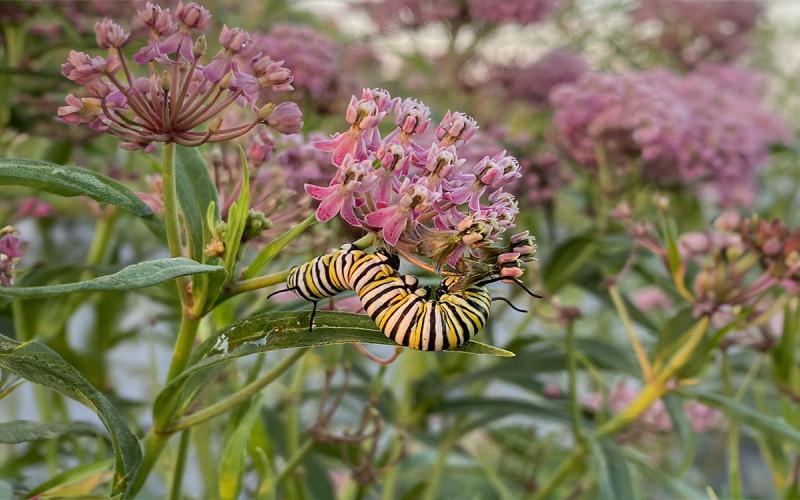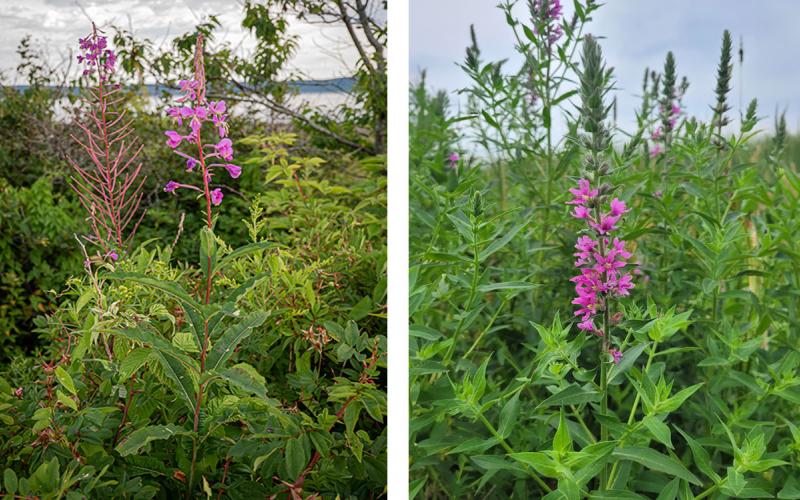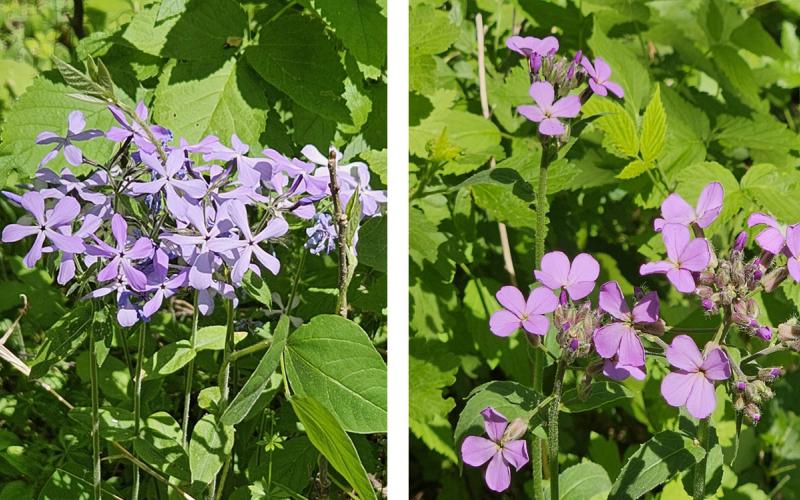Written by Bret Lang, Graduate Research Assistant, under the direction and review of Lora Perkins, Associate Professor, in the Native Plant Initiative and the SDSU Department of Natural Resource Management; Kristine Lang, and Robin Buterbaugh.
As you walk through South Dakota's grasslands, woodlands, and along stream edges, you may come across a plant with an umbrella-shaped flower head made up of numerous tiny yellow flowers. Although this plant may catch your eye, correctly identifying it before touching it is crucial due to potential health risks of skin exposure from a dangerous look-alike.
Plant Profiles
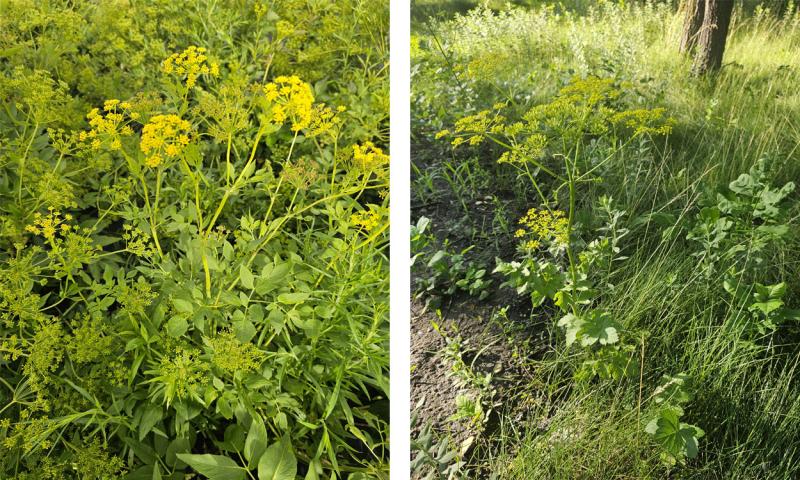
Golden alexander (Zizia aurea) is a striking native plant in South Dakota. However, another plant in this region often mistaken for golden alexander does not belong here and contains a harmful toxin. Wild parsnip (Pastinaca sativa) is an invasive species introduced to the United States from Europe and Asia by settlers who cultivated it for its edible taproot. These two species are often mistaken for one another due to their similar height, compound leaves, and yellow flowers. However, they have very different effects on the environment and human health. Understanding the differences between these plants is essential for making informed habitat management decisions and ensuring safe handling. Below are some of the key differences to look for when trying to identify these two species.
Flower Structure
Although these two species can be distinguished from one another by looking at their flowers, this can often be tricky, because they have similar characteristics. Both golden alexander and wild parsnip have yellow flowers arranged in compound umbels. However, golden alexander's flowers are more clustered, with smaller, rounded petals (Figure 1). Wild parsnip flowers are more spread out and have a flat-topped appearance (Figure 2). The petals of wild parsnip flowers are also wider and more spaced than those of golden alexander.
Golden Alexander

Wild Parsnip
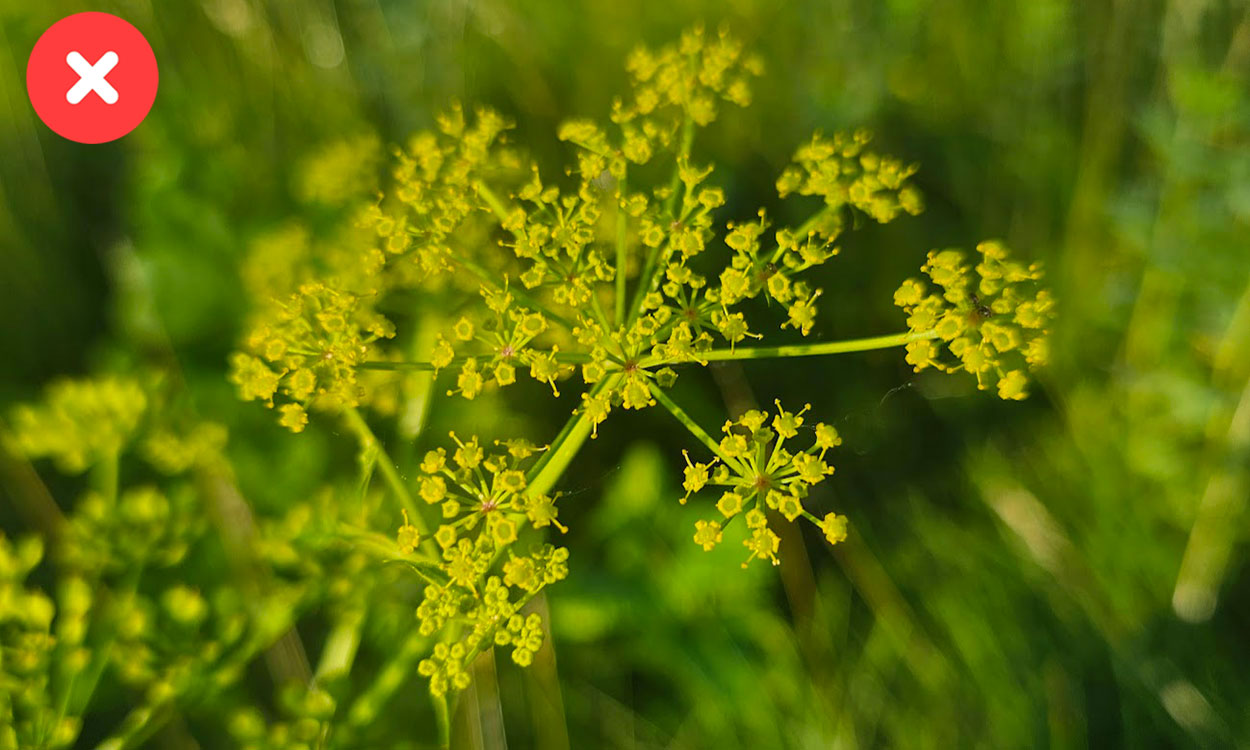
Leaves and Stems
A more-distinguishing feature is the arrangement of leaves on the stem and stem characteristics of these two species. Golden alexander has compound leaves with three to five leaflets that are oval to lance-shaped with serrated edges, and its stems are smooth, often with a purplish hue (Figure 3). In contrast, wild parsnip has pinnately compound leaves with sharply toothed leaflets that are more linear to oblong in shape (Figure 4). The stems of wild parsnip are grooved and can be bristly, giving them a rougher texture compared to the smooth stems of golden alexander.
Golden Alexander
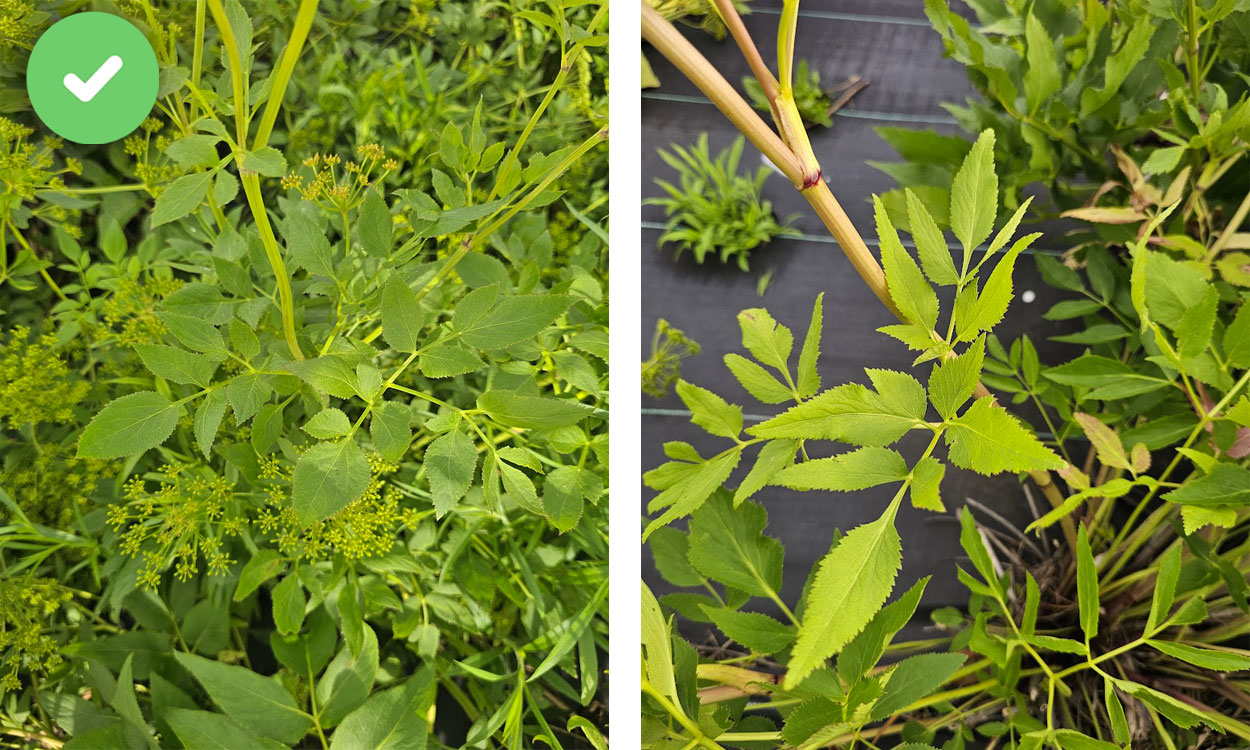
Wild Parsnip
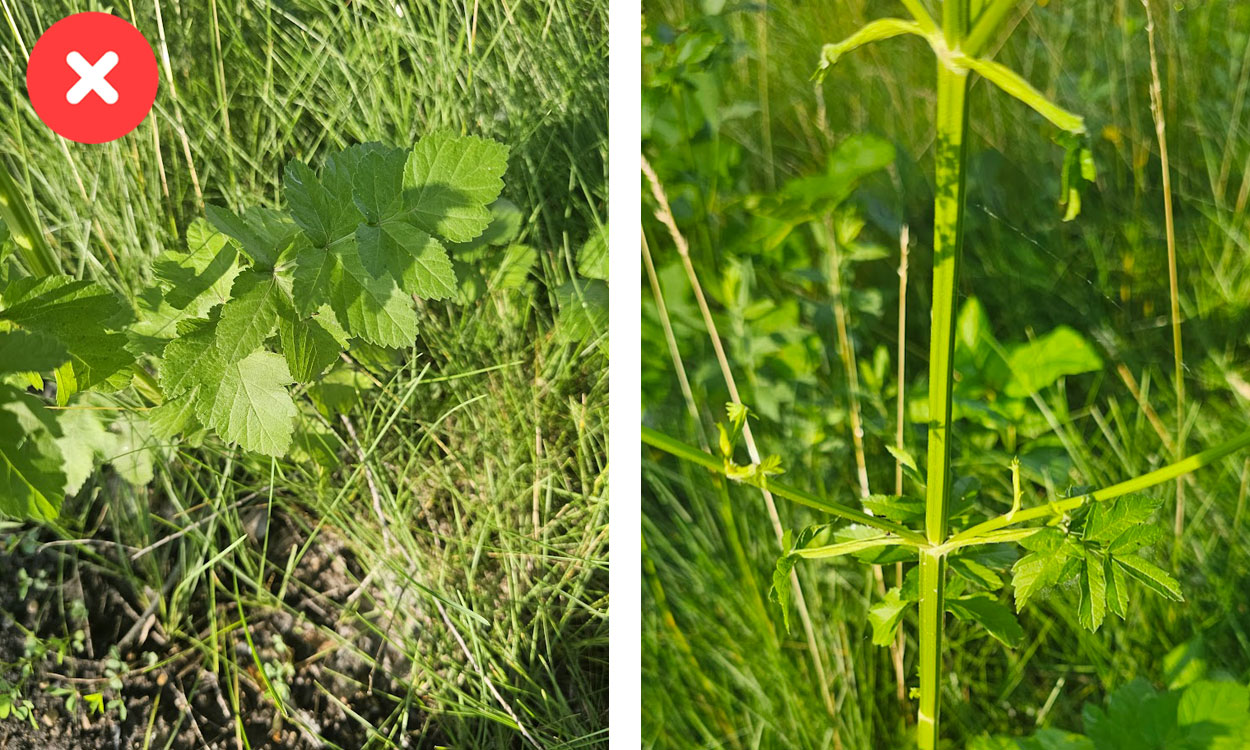
Habitat and Ecological Function
Both golden alexander and wild parsnip can be found in similar habitats, such as meadows, prairies, and along stream edges, making habitat alone an unreliable way to distinguish between the two species. Golden alexander thrives in moist, rich soils and is commonly found in open woods and along streams. It is a native species beneficial to local ecosystems, providing nectar for various pollinators, including bees and butterflies, and it is a host plant for black swallowtail larva. Its presence supports biodiversity and contributes to the stability of native plant communities.
Wild parsnip is an invasive species that spreads aggressively in disturbed areas, often outcompeting native vegetation. Wild parsnip poses a significant ecological threat by forming dense stands that reduce biodiversity and alter habitat structure. These stands are particularly harmful to grassland birds and insects, which cannot use these areas for nesting or food. Additionally, wild parsnip's phototoxic sap can cause severe skin reactions in humans when exposed to sunlight, making it a public health hazard as well. If you come into contact with wild parsnip sap, move out of the sunlight immediately and seek medical attention.
Golden Alexander
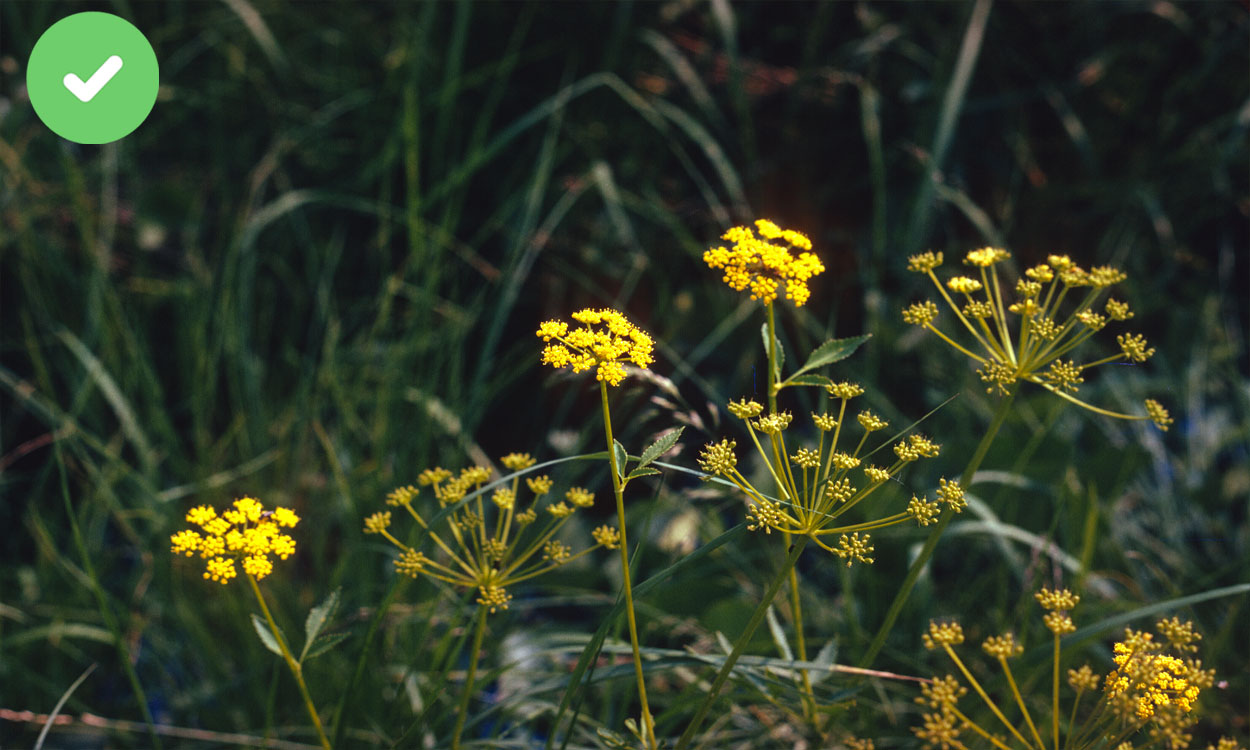
Wild Parsnip
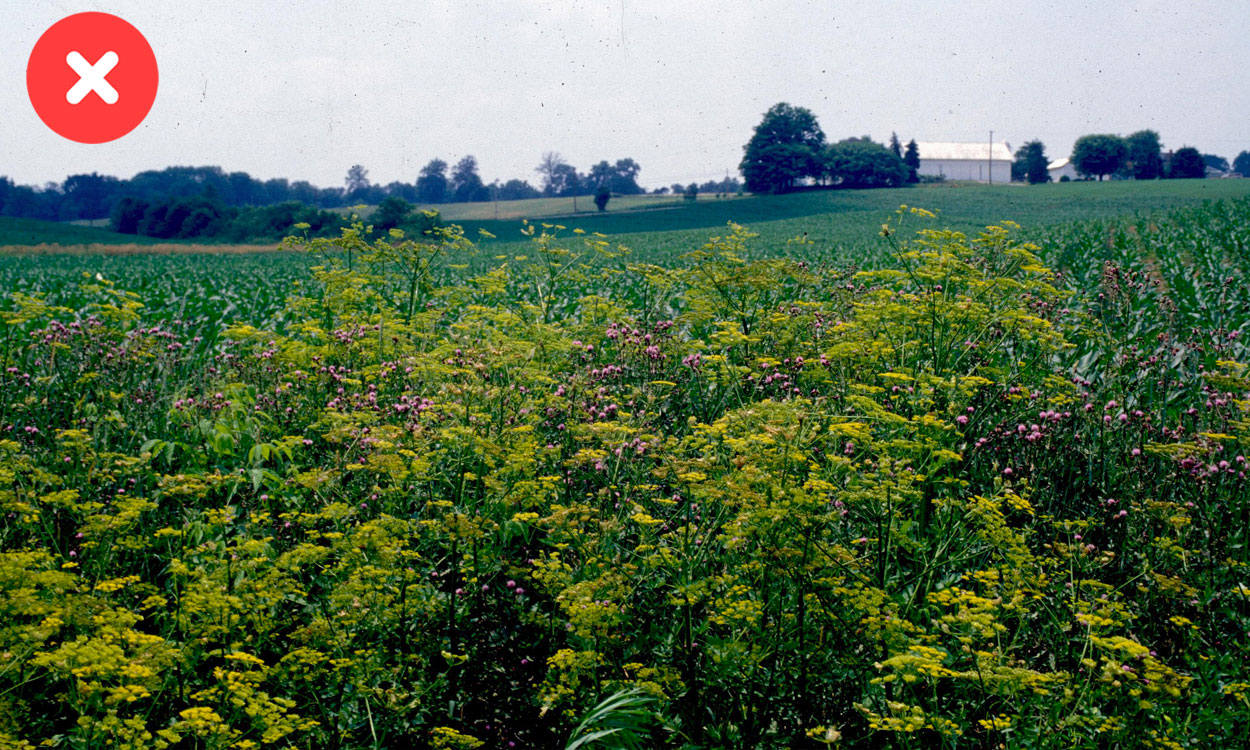
Managing Wild Parsnip
Due to its aggressive invasiveness and the health risks associated with its sap, managing wild parsnip is crucial. It is essential to wear protective clothing when handling wild parsnip to avoid skin contact with its toxic sap. Mechanical removal, such as pulling or cutting the plants before they set seed, is often preferred to minimize the spread. To prevent wild parsnip from proliferating and spreading, it needs to be removed before it has a chance to set seed. It is important to note that wild parsnip is a biennial, meaning that it grows only foliage in its first year; then it flowers and sets seed in its second year. Herbicide treatments can be effective for severe infestations, but remember to always follow the manufacturer's instructions and take necessary precautions.
References and Resources
- Wild parsnip Identification & Reporting, University of Minnesota Extension.
- Fields (and Roadsides) of Gold, Iowa State University Extension.
About the Native Plant Initiative
Native plants are the foundation that supports insects, pollinators (including bees), birds and wildlife.
Learn More